The trailer we made for miro
The challenge: interaction with intelligent environments
In the summer semester 2015 it was our job to develop an ambient system that understands and considers the context of its users. As intelligent environments do not yet exist, the space of possibilities is nearly endless: there is neither a technological infrastructure given, which limits the creative space nor are there any interaction paradigms.
Hence by having the task developing such a system we also had to deal with human-computer-interaction per se. We had to define and understand it once again, so that we could grasp, how it has to transform in intelligent environments. Does a user have to express his demands via language? Does he have to learn new gestures to interact with his environment? Or will systems operate autonomously by predicting emotions, needs and tasks of human beings? Therefore the overall question was: how will human-computer-interaction change with the introduction of intelligent environments?
The problem: people forget about themselves
To find a suitable area for the experimental examination with ambient intelligence, we had to literally narrow down the space and create a canvas for our reflections. For this purpose we used classic brainstorming sessions where we collected and categorised different environments on paper.
Hospitals and nursing homes sounded quite interesting and exciting for the whole team. Because of their inherent function they immediately offered us a unique scope for ambient intelligence. Both places aim to heal impaired people or try to support them in living on in dignity. People live there for days if not the rest of their life and are partly not able to independently eat or go to the toilet. Ambient intelligence can make those environments effectively better places.
To find interesting touch points within hospitals, we have developed customer journeys. This helped us to take a more holistic view of the course of disease people experience. Moreover the approach resulted in the fact that we have found a large number of negative points before people actually enter a hospital. Thus, the focus shifted away from hospitals towards the problem that humans become patients at all.

Brainstorming Session
We used brainstorming, particularly at the beginning of the project phase, to quickly identify our possibilities. With such a large and little-known subject, we found it sensible to quickly limit our possibilities.

Customer Journey
To detect solvable problems in a person's course of disease, we used cusomter journeys. They helped us to filter out and analyse interesting touch points.
The problem: living healthy isn't easy at all
Humanity seems to live #healthy. Vegetarian, organic, superfoods, smoothies - the market is growing with more and more guides, websites, diets, sports and fitness trackers. On the other hand, more and more of the so-called "civilization diseases" occur. The causes can be found in the lifestyles and behaviour of the industrialised countries. We consume too much sugar, cigarettes and alcohol, eat in wrong amounts, move too little and have to deal with stress too much. In addition, there is too much exposure to environmental factors, such as noise or contaminated air.
And yet, our bodies actually communicate with us via natural signals. Thus we are hungry to communicate ourselves the idea of eating, thirsty to drink and feel weak when we need a break. In modern culture, however, many people have forgotten how to perceive and accept these signals. This problem was revealed to us as we studied our customer journey. And it became our self-imposed task to deal with this problem by means of ambient intelligence.
The solution: make health tangible
We have felt the need for people learning to perceive their own health differently, in order to empower them living a truly healthy life. In order to throw a new light on our own health, we decided to present it as an empathic being. Inspired by the Tamagotchi effect, which states that people are able to build an emotional relationship with virtual beings, we developed miro.
Miro is a virtual creature that lives in the user's own four walls. It reflects how a human is dealing with his health. It gives body and mind a voice which is also heard in stressful situations of modern everyday life. However it is not relevant how healthy or ill a person is, but how he behaves towards his health. Miro helps to reflect the moment and pay attention to the internal signals of the body.
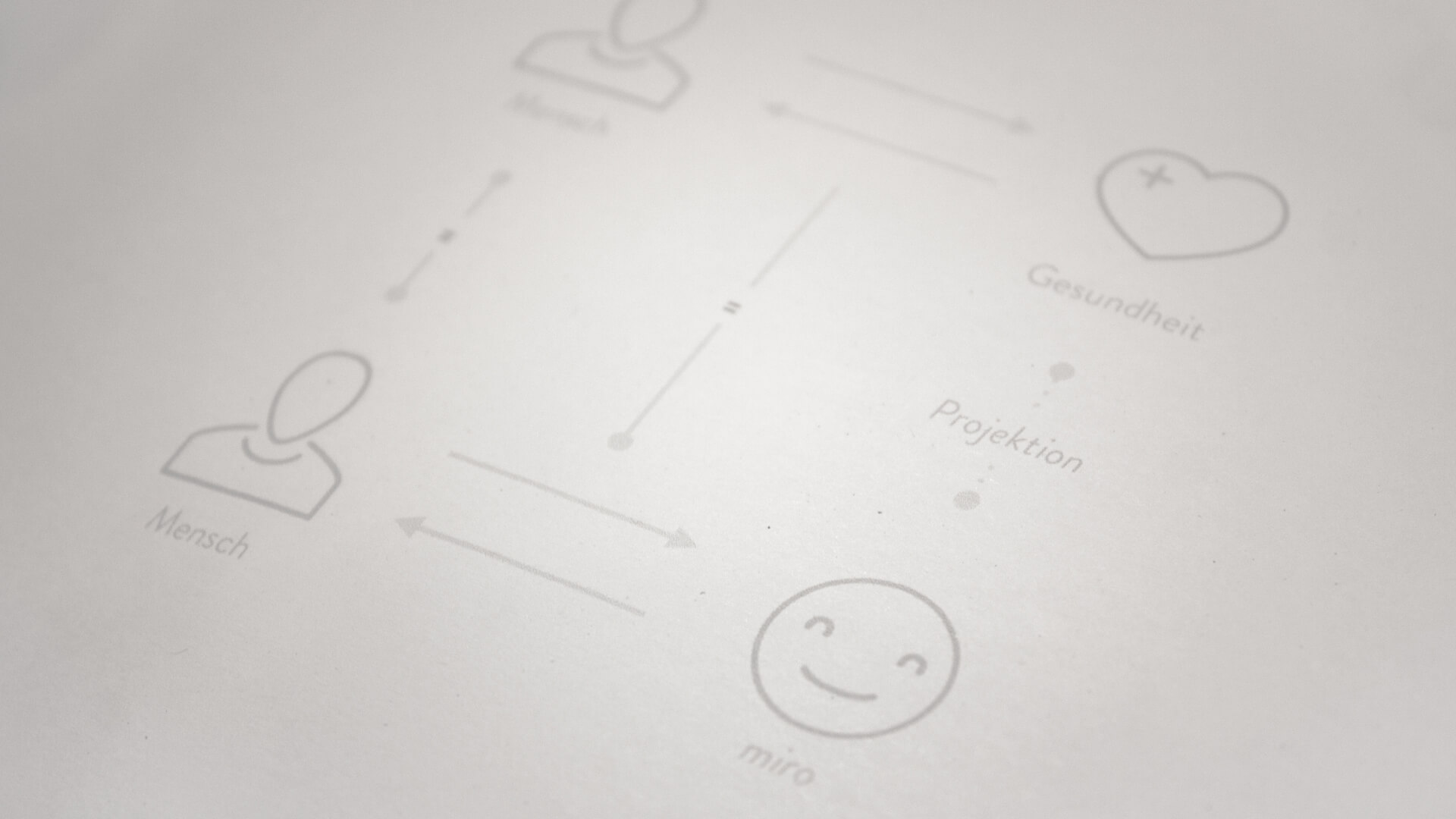
A projection of health
Miro is supposed to be a projection, a copy of health: just as humans deal with their health, they also deal with miro as a living being. This is to strengthen the bond between human consciousness and its health.
Interaction Design of miro: the user becomes the interface
The goal of miro is to re-educate people for their own health. If, therefore, miro is a copy of the mental and physical health, the human body must also serve as the actual interface. That is why we designed miro in such a way that the behaviour with the own health has a direct effect on miro. This creates a very natural interaction with the system: "When I do good for myself, I also do good for miro. When I do bad for myself though, I also do bad for miro."
To express himself, miro uses his own gestures and expressions, which basically consist of two behaviours: the Avatar and the Patronus. Miros behaviour as an avatar is based on reflecting human health. If man takes good care of his or her health, miro is very energetic. Its movements are rhythmic and harmonious. If a human doesn't treat himself very well, miro loses color and staggers through the area chaotically – it seems sick and desolate. This simple change of miro's appearance is supposed to encourage people reflecting their behaviour with their own health and adapt accordingly. If he still does not recognise the signals, miro turns into a Patronus, who is determined and energised for attention. As the Patronus, miro actively supports changing the own behaviour. For example, miro leaves his place and playfully points on sneakers when the user should move again.
Visual Design: A being of many
Miro consists of many small beings which are metaphors for every little aspect of health. In union, these beings behave as in a great swarm, in which each individual respects his neighbor and feels empathy for him; miro is therefore a living ecosystem. As a result, a negative impact on a swarm member has an impact on the swarm as a whole: miro feels as his weakest member feels.
Within the flat, miro shall create contrast. For this reason, miro's smallest creatures are based on sea-dwellers and orient themselves also by the color of the ocean. During our research, we found out that the sea has a special effect on humans. It is perceived as an undisturbed and free landscape and has a soothing and sympathetic effect. These characteristics were consistent with our endeavour to develop a companion for health. Thus they were used to define the visual shape of miro.
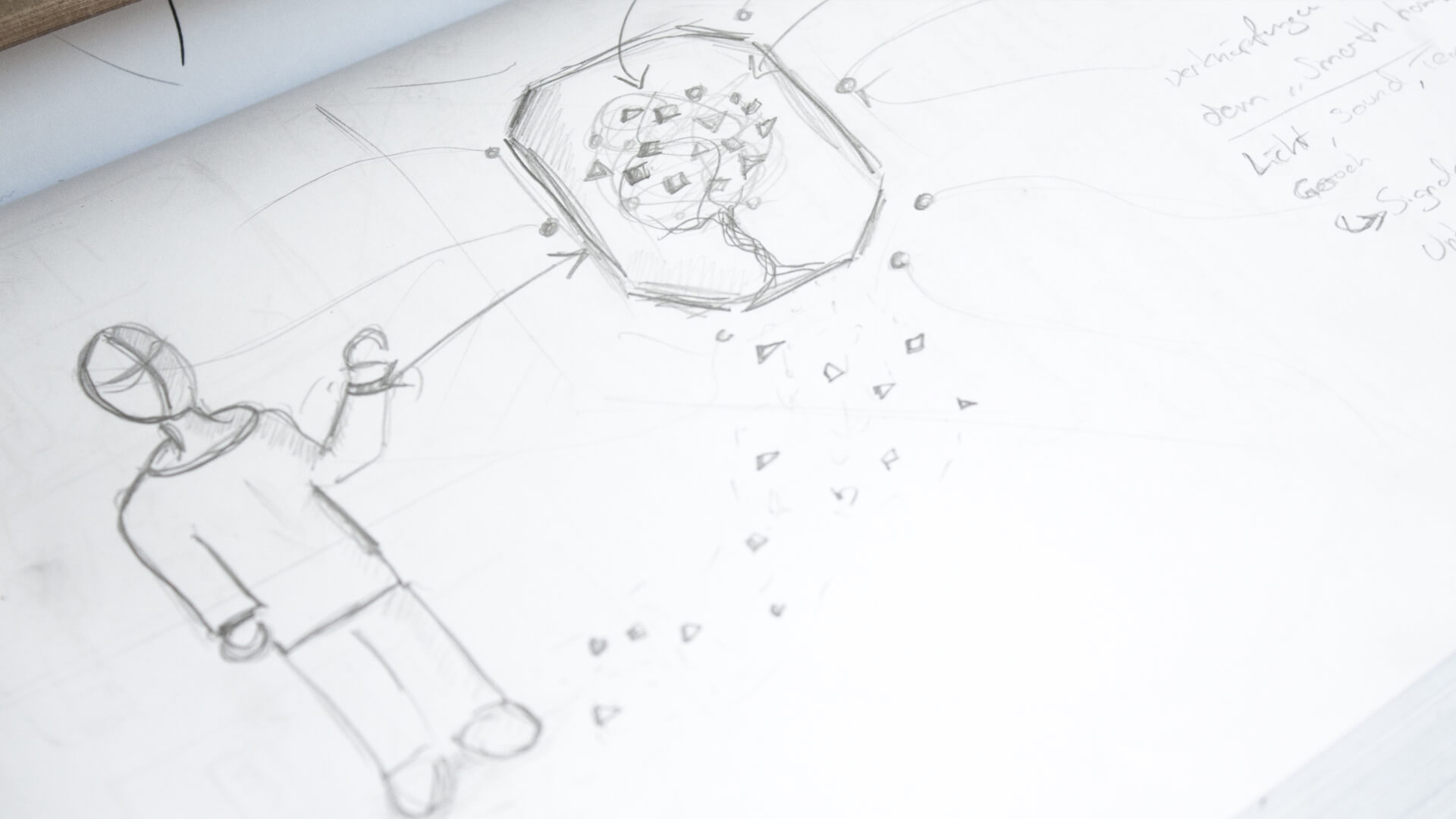
A sketch of miro's interaction model
We wanted to create miro in such a way that it conveyes the user, that it is part of his body and his life. For this reason, miro instantly reveals itself when the user enters their own home and literally arises from him when it moves onto the wall.
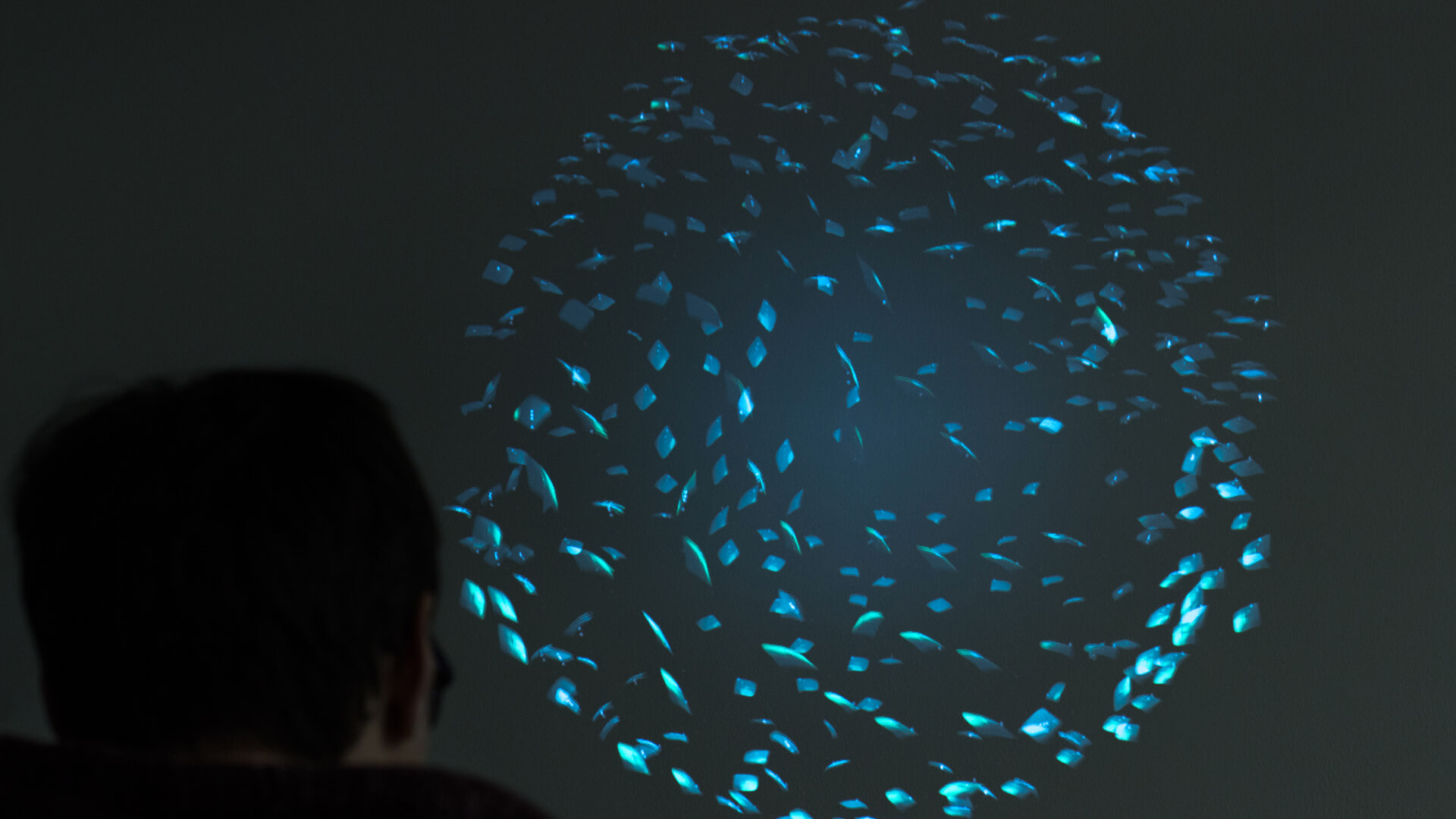
Visual Design of miro
Miro consists of many little beings that together form an ecosystem. Similar to health, there are comparable rules in miro's behaviour: if only one aspect is bad, the whole system suffers.
Prototype: miro appears
Miro appears out of the user as soon as he enters the room. This detail is intended to emphasize the close connection between the body and miro.
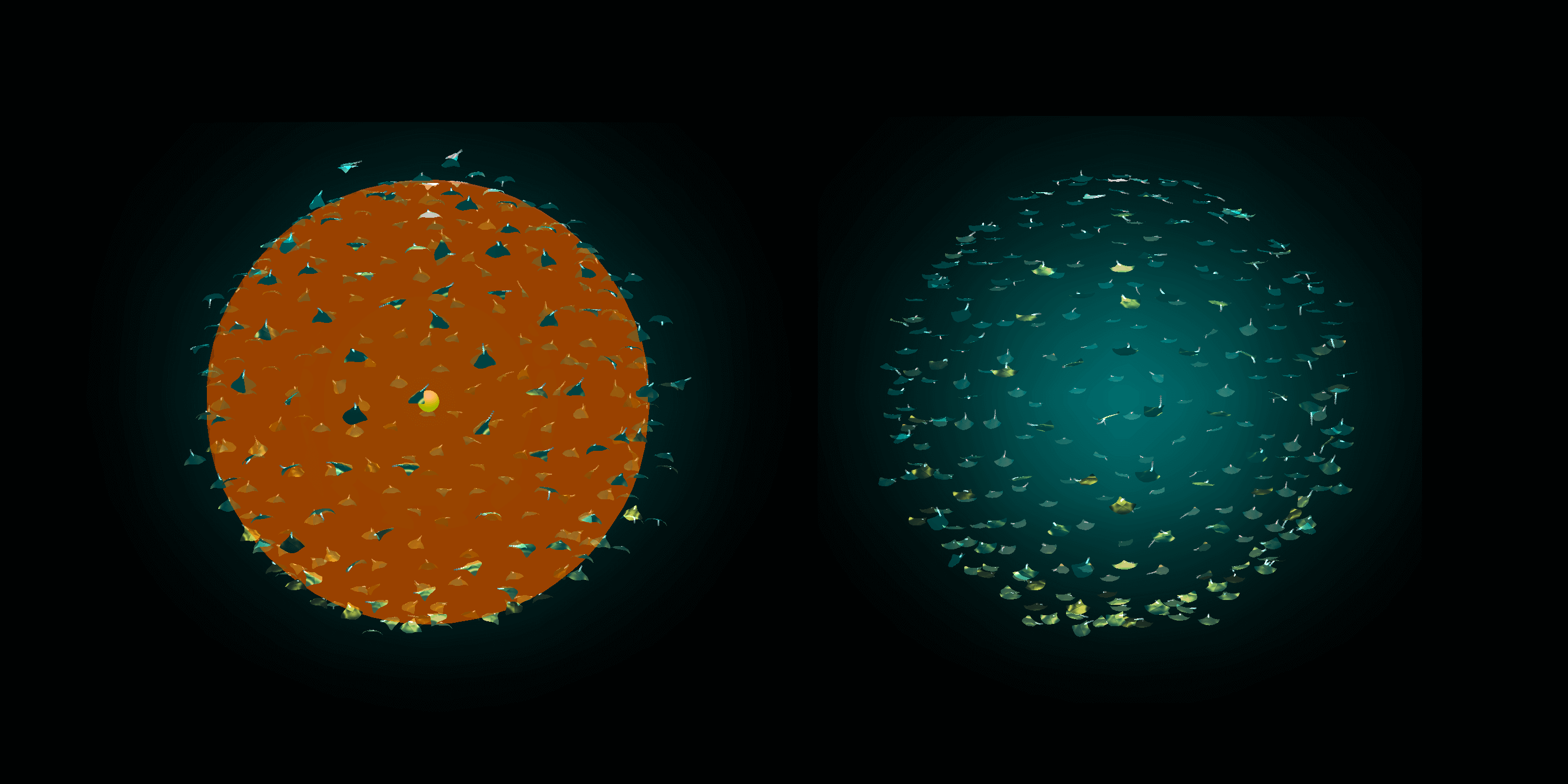
Prototype: Healthy state
In VVVV the healthy state of miro is achieved by placing a center of attraction centrally (green sphere) and commanding the particles to maintain a specific distance to it (orange area).
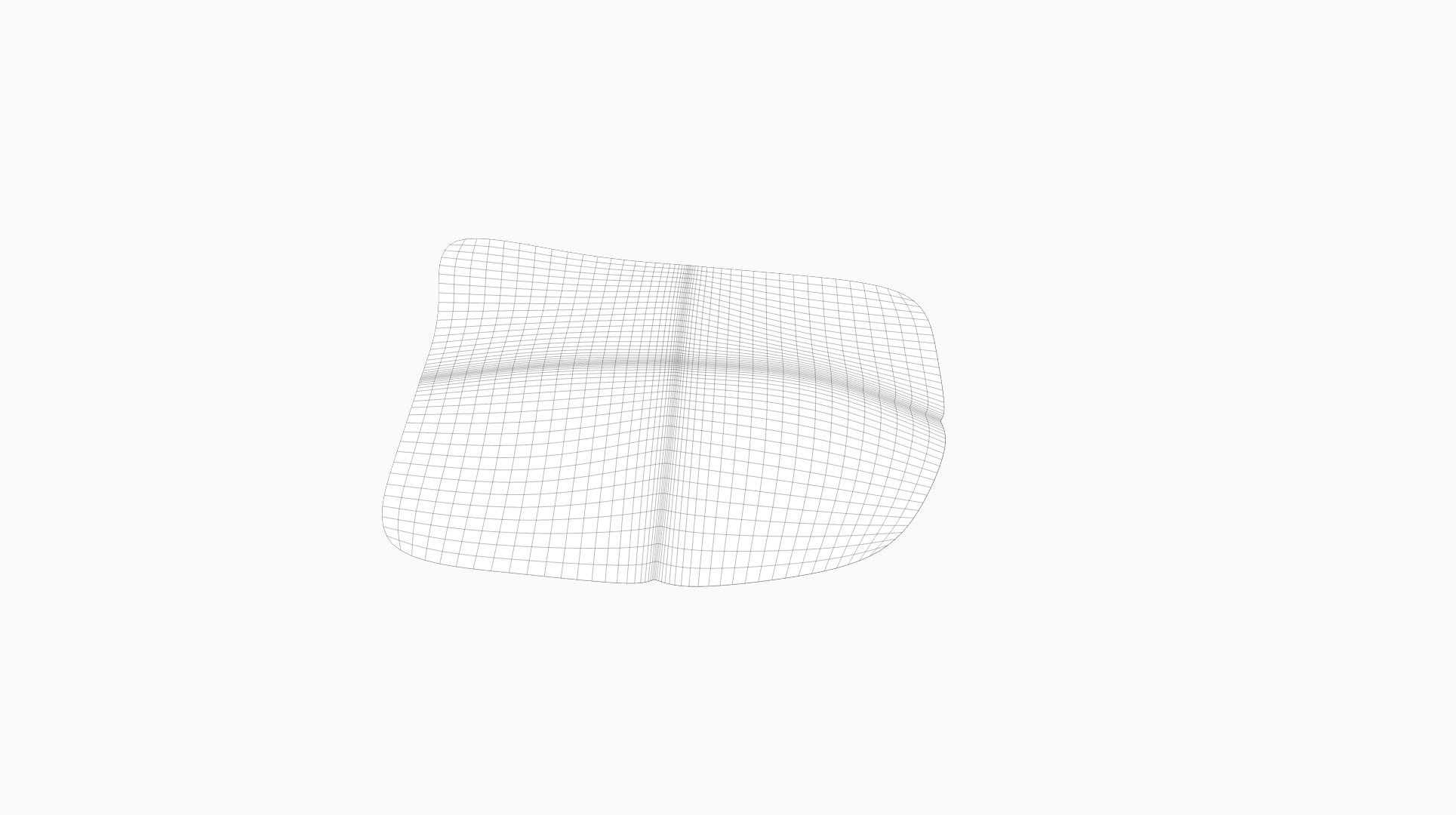
3D Model of a being
The beings were extremely simplified and then animated in VVVV.
Concluding words
Miro was an experiment. There is neither the necessary mass-based technology nor the infrastructure to make a system like this work (it's the year of 2016 while writing this. Don't judge me >2020 people!). Therefore, the project is to be viewed as a vision for future ambiance systems and not as a proposal for solving a dominant problem of society. By working on the project, we tackled previously unanswered questions in relation to ambient systems, to which no paradigms exist so far. Hence we made a design-oriented contribution to the research of ambient systems.